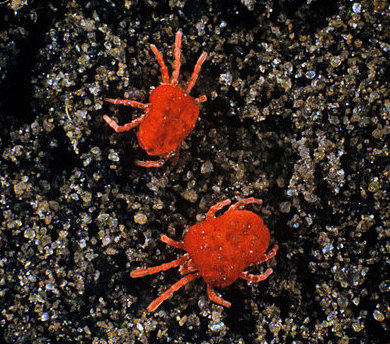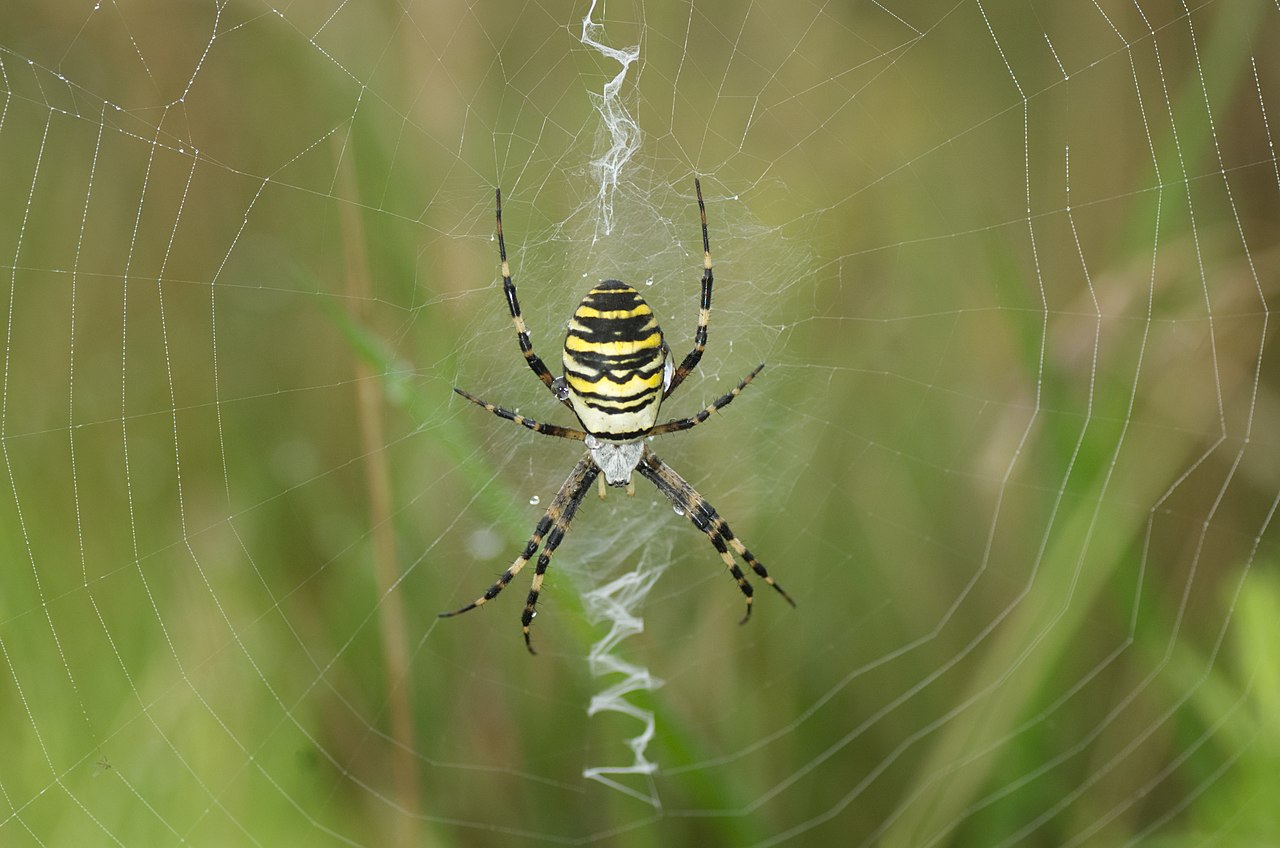Arachnids differ from insects by lacking wings and antennae. Adult insects have three pairs of legs while arachnids have four pairs of legs in most species, although some mites only have two pairs. The bodies of adult insects have three distinct parts, the head, thorax and abdomen, whereas in arachnids the head and thorax are fused together. The immature stages in the development of arachnids are similar in appearance to the adults (but in mites may have fewer legs).
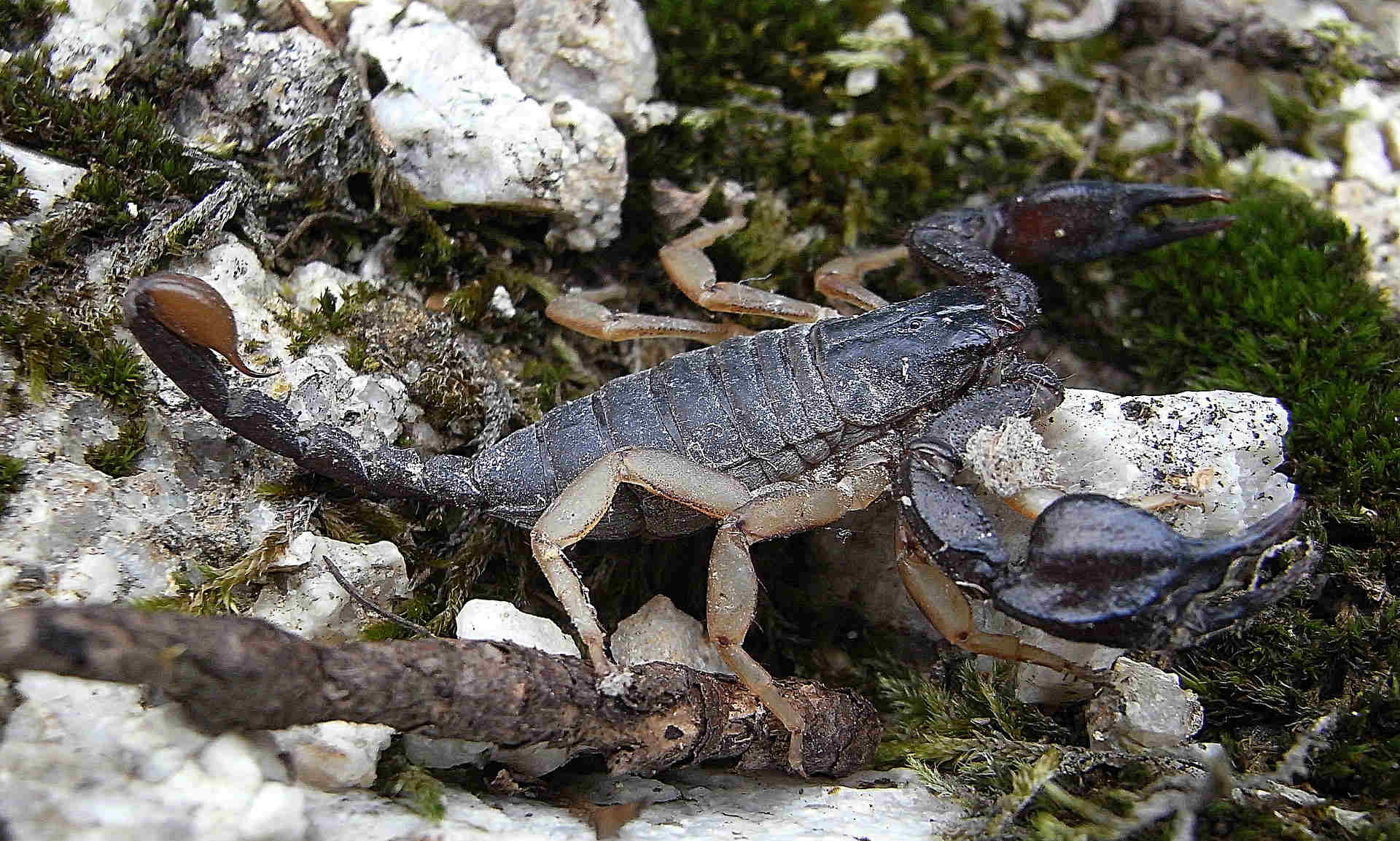
European scorpion Euscorpius flavicaudis. The British colony on the Isle of Sheppey is the northernmost known. The sting is not often used, and is milder than a bee sting.
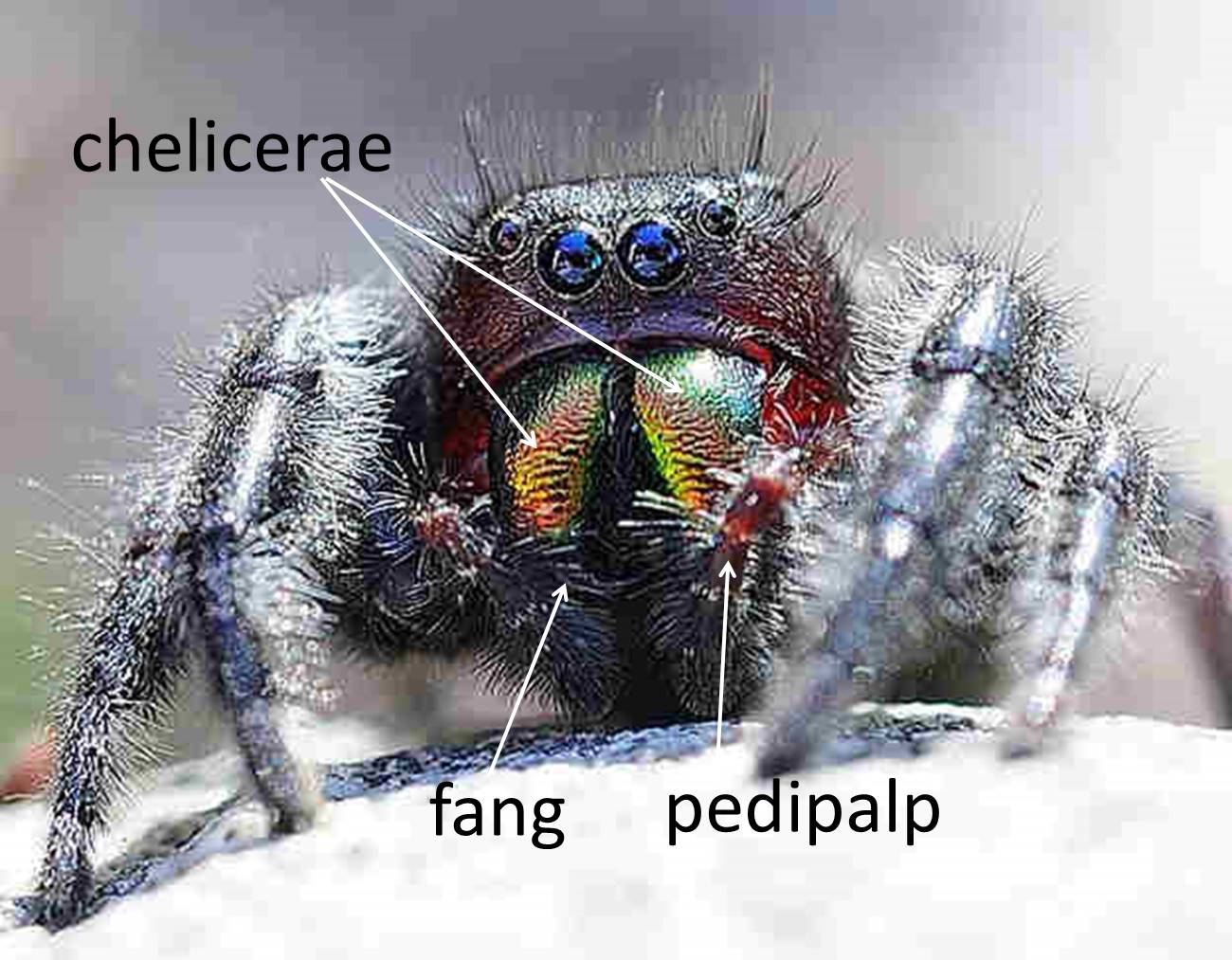
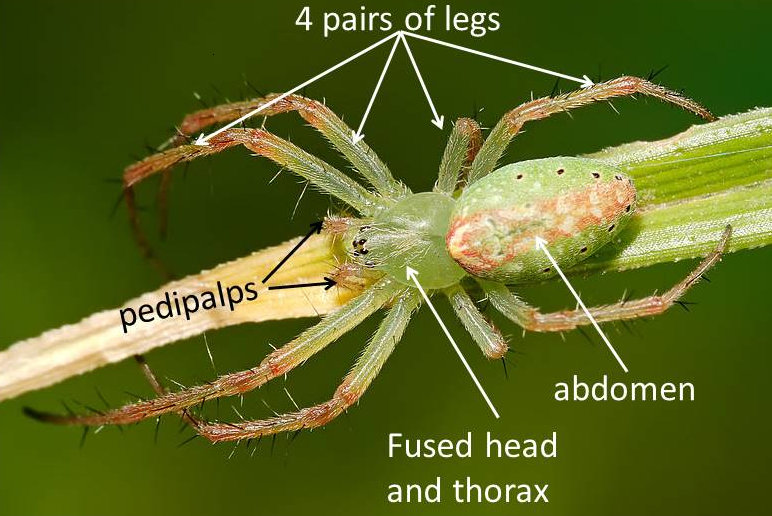
The most commonly seen arachnids, they have two obvious body segments, the head/thorax and the large abdomen. They have stabbing/stinging chelicerae and moderate length pedipalps.
Spiders produce silk, and many create prey-capturing webs of sticky silk, either as a mass of fibres, or an elaborate and beautiful geometric web.
Harvestmen are most often see in the late summer and autumn. They have strikingly long thin legs and long pedipalps. Their body appears to be a single compact egg-shaped unit
Probably the most charming arachnids, the tiny pseudoscorpions look like stingless scorpions or terrestrial lobsters, with their huge pincer pedipalps. They are common, but not often noticed because of their small size
The mites are by far the most abundant arachnids in Britain and Ireland, in terms of species and in sheer numbers. They are all minute (the ticks can be larger especially after a blood meal). Their body is fused into a single unit, and their legs are usually short. Mites can be predators, herbivores, parasites and gall-formers, and are important in freshwater as well as on land.
Other sources of information
Website
Web site of the British Arachnological Society
Page drafted by Andrew Halstead, reviewed by Andrew Salisbury and compiled by Steve Head
European scorpion Euscorpius flavicaudis. The British colony on the Isle of Sheppey is the northernmost known. The sting is not often used, and is milder than a bee sting.

Arachnids - introduction
The arthropod Class Arachnida in Britain and Europe contains some familiar animals, such as spiders and harvestmen, as well as smaller creatures, such as mites, ticks and pseudoscorpions. Around the world there are several other, often rather exciting orders, including scorpions, sun spiders and whip scorpions.
There are no scorpions native to Britain and Ireland, although there are five species in southern France. Euscorpius flavicaudis, the European yellow-tailed scorpion has become established in a few colonies in England for over 100 years especially such as dockyards. They are unlikely to be found in gardens.
Arachnids - introduction
The arthropod Class Arachnida in Britain and Europe contains some familiar animals, such as spiders and harvestmen, as well as smaller creatures, such as mites, ticks and pseudoscorpions. Around the world there are several other, often rather exciting orders, including scorpions, sun spiders and whip scorpions.
There are no scorpions native to Britain and Ireland, although there are five species in southern France. Euscorpius flavicaudis, the European yellow-tailed scorpion has become established in a few colonies in England for over 100 years especially such as dockyards. They are unlikely to be found in gardens.
Arachnids differ from insects by lacking wings and antennae. Adult insects have three pairs of legs while arachnids have four pairs of legs in most species, although some mites only have two pairs. The bodies of adult insects have three distinct parts, the head, thorax and abdomen, whereas in arachnids the head and thorax are fused together. The immature stages in the development of arachnids are similar in appearance to the adults (but in mites may have fewer legs).


Arachnids do not have the complex mouthparts of insects (or other arthropods covered here). Instead they have paired structures modified legs) called chelicerae on either side of their mouth, which serve as jaws, and can be pincer-like in shape. In spiders they carry a fang which injects venom into prey.
Arachnids also have a second modified limb pair on the head, associated with the mouth and feeding. These are called pedipalps, and vary greatly between groups. They form the big pincers in scorpions, pseudoscorpions and some other arachnids and are used to catch prey. In spiders and harvestmen they are leg-like and sensory in function, also helping manipulate food. In desert-living sun spiders they are large and used both for walking and for touch, rather like antennae. Mite and tick pedipalps are usually quite short and used in feeding.
Spiders, scorpions, pseudoscorpions and harvestmen are mostly predators of other small invertebrate animals or scavengers that feed on dead invertebrates. Mites show a much wider range of dietary habits. Some are predators but many feed by sucking sap from plants or blood from birds and mammals, and can be serious disease vectors. Others are scavengers that feed on decaying plant material and fungal growths.
We have pages on these groups:
Arachnids do not have the complex mouthparts of insects (or other arthropods covered here). Instead they have paired structures modified legs) called chelicerae on either side of their mouth, which serve as jaws, and can be pincer-like in shape. In spiders they carry a fang which injects venom into prey.
Arachnids also have a second modified limb pair on the head, associated with the mouth and feeding. These are called pedipalps, and vary greatly between groups. They form the big pincers in scorpions, pseudoscorpions and some other arachnids and are used to catch prey. In spiders and harvestmen they are leg-like and sensory in function, also helping manipulate food. In desert-living sun spiders they are large and used both for walking and for touch, rather like antennae. Mite and tick pedipalps are usually quite short and used in feeding.
Spiders, scorpions, pseudoscorpions and harvestmen are mostly predators of other small invertebrate animals or scavengers that feed on dead invertebrates. Mites show a much wider range of dietary habits. Some are predators but many feed by sucking sap from plants or blood from birds and mammals, and can be serious disease vectors. Others are scavengers that feed on decaying plant material and fungal growths.
We have pages on these groups:
The most commonly seen arachnids, they have two obvious body segments, the head/thorax and the large abdomen. They have stabbing/stinging chelicerae and moderate length pedipalps.
Spiders produce silk, and many create prey-capturing webs of sticky silk, either as a mass of fibres, or an elaborate and beautiful geometric web.
Harvestmen are most often see in the late summer and autumn. They have strikingly long thin legs and long pedipalps. Thie body appears to be a single compact egg-shaped unit
Probably the most charming arachnids, the tiny pseudoscorpions look like stingless scorpions or terrestrial lobsters, with their huge pincer pedipalps. They are common, but not often noticed because of their small size
The mites are by far the most abundant arachnids in Britain and Ireland, in terms of species and in sheer numbers. They are all minute (the ticks can be larger especially after a blood meal). Their body is fused into a single unit, and their legs are usually short. Mites can be predators, herbivores, parasites and gall-formers, and are important in freshwater as well as on land.
Other sources of information
Website
Web site of the British Arachnological Society
Page drafted by Andrew Halstead, reviewed by Andrew Salisbury and compled by Steve Head


.jpg)
.jpg)
